🛂 Log In / Log Out
Log In
OpenUEM comes with a web user interface named OpenUEM Console.
The console can work behind a reverse proxy or be served right away from the Console component on port 1323 by default.
The log in page looks like this:
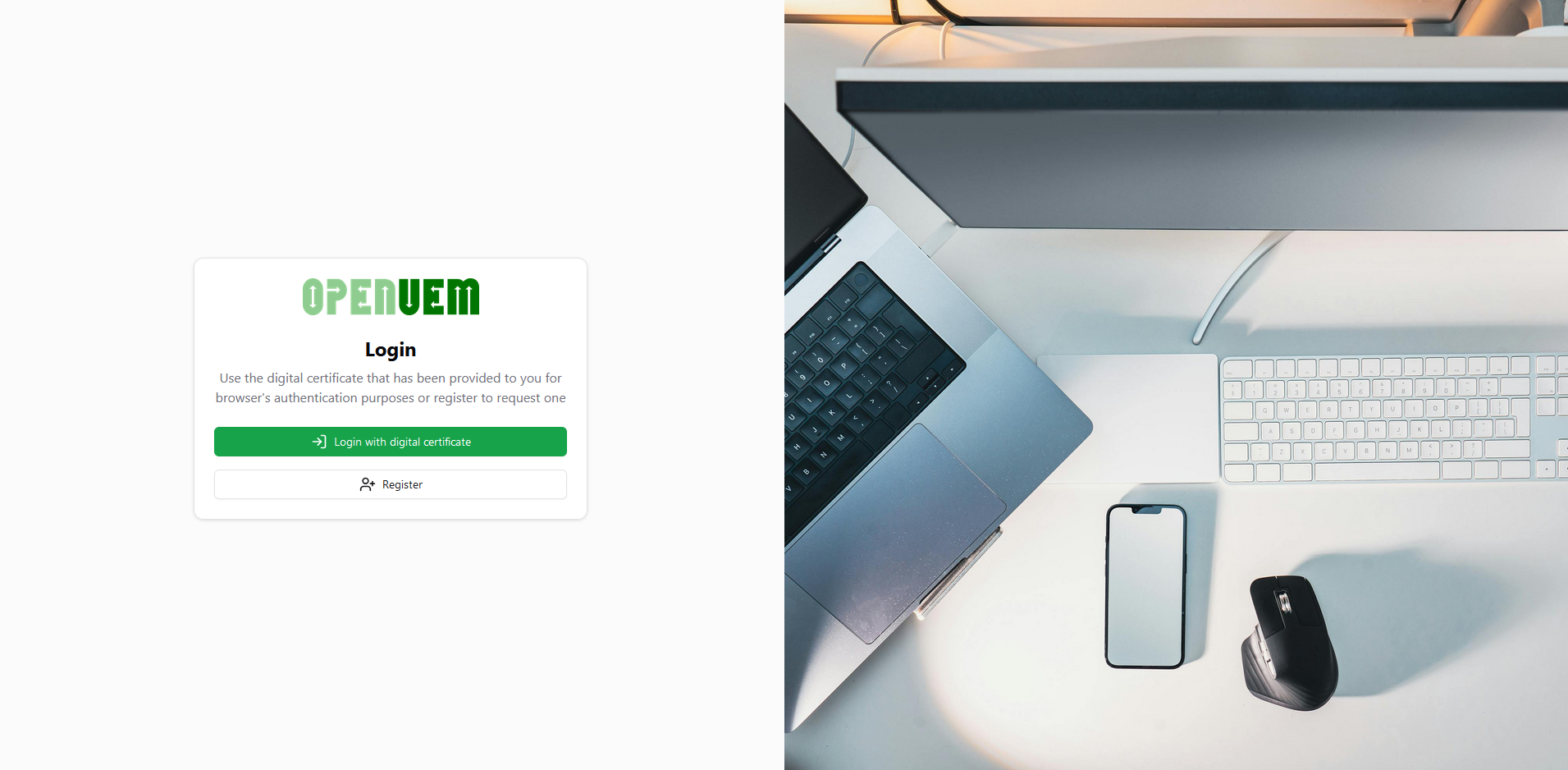
If you see a security warning your browser may not trust in the Certification Authority. Please visit the guide to import certificates
To log in to the console, you'll need to have a user certificate installed in your browser. Please, visit this guide to learn more about how you can import these certificates.

When you click the log in button you'll have to select the certificate. If no certificate is shown check if you've imported the certificate to the Personal certificates store. Please visit the guide to import certificates
In the server setup for Windows or Linux, if you've selected to auto generate the certificates in the installation, both the CA certificate and the user certificate should be imported automatically to the browser in the machine where OpenUEM has been installed.
If authentication works fine, you'll see the Dashboard which is documented in the next section.
OpenID Connect
From version 0.10.0 onwards, you can configure OpenUEM to use a supported Identity Provider thanks to OpenID Connect.
OpenUEM supports these providers:
If you want to use one of these providers with OpenUEM, you must first log into OpenUEM with the admin user certificate and configure your provider. Once you have checked that OpenID works fine, you can choose to disable the use of digital certificates.
To avoid an administrator lockout, if your OpenID service is not recoverable, you can reenable the use of digital certificates to log into the console by adding the following entry to the Console section of the openuem.ini configuration file and restart the console service:
reenablecertauth = true
Before we explain how you can configure your provider and OpenUEM let’s talk about the common configuration in OpenUEM. You can configure how users log into OpenUEM visiting the Authentication tab in the Global Configuration (click on the cog icon in the navigation bar).
The Authentication tab allows you to:
- Enable or disable the use of digital certificates to log into the system.
- Show or hide the Register button in the login page. The Register button allows users to create a new account and ask for a digital certificate to log in.
- You can show or hide the Login with OpenID Connect button.
- If you want to use OpenID Connect you must select one of the supported providers.
- You can force OpenUEM to create automatically an account that is linked to the user that logs in with your Identity Provider, or you must create an account in OpenUEM that shares the username used with your Identity Provider before the user logs in.
- You can force OpenUEM to approve automatically the account that is created when a user logs in with your Identity Provider, or you can choose to block the access to OpenUEM until you approve that account.
- Configure specifics settings for the selected OpenID Connect provider.

If you want to create a user account, before the user logs in, you can do it from the Users tab in the Global Configuration. You must specify the username that exists in your Identity Provider, fill in the account data, and select the authentication type.
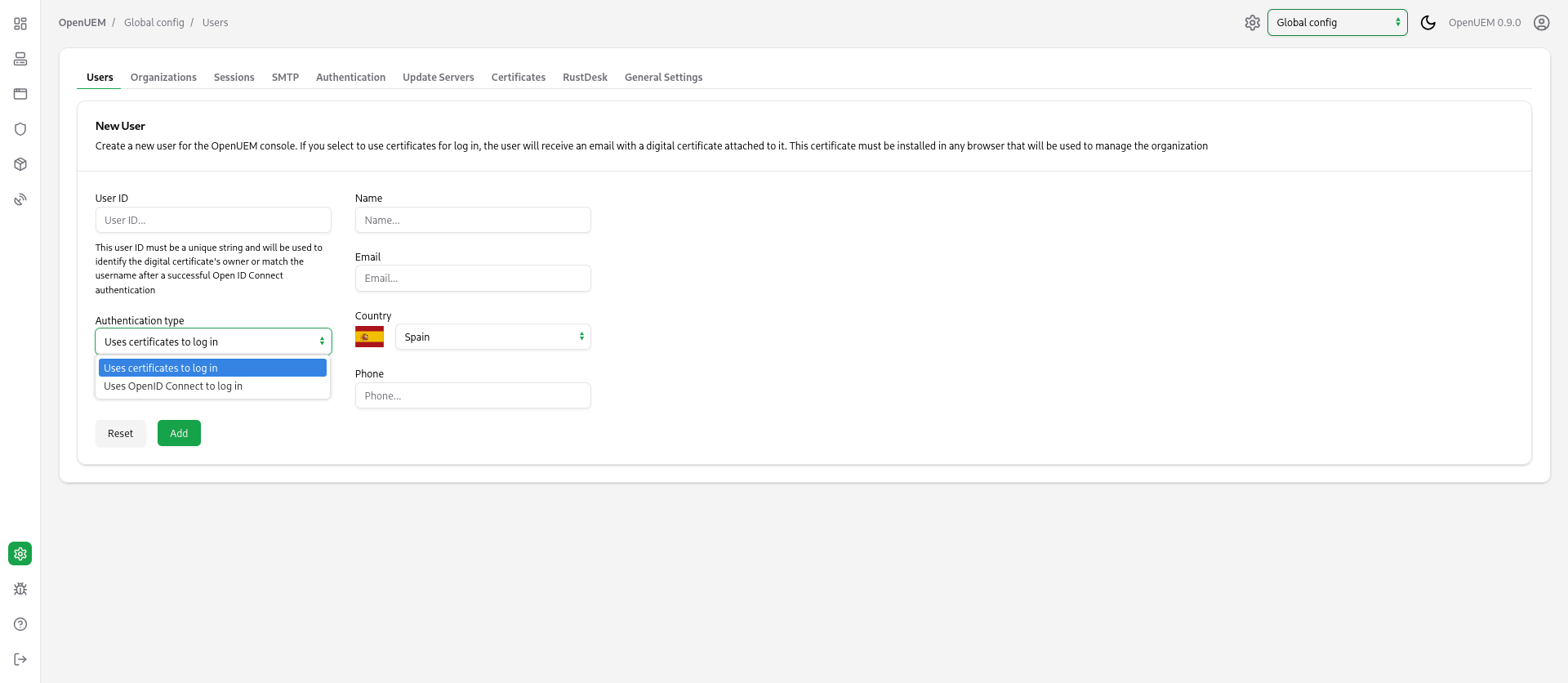
If you enable the manual approval of accounts, you must visit the Users tab and click on the three dots button to approve an account, so the user is allowed access after the user logs into your Identity Provider

Let’s check now, how you can configure OpenUEM to connect to your provider
Authelia
This section discusses how you can create an application in Authentik and configure OpenUEM so you can log in to the console using this Identity Provider.
This section assumes that you have a user created in Authelia (for example, mytest) that uses a password to log in, and that this user is a member of a group (for example, openuem). This documentation doesn’t explain how you can create users or groups, use passkeys, external authentication, 2FA..., please refer to Authelia’s documentation to learn more about those topics or ask for help in OpenUEM Discord channel.
Here’s the sample configuration that I use in Authelia’s configuration.yml file to create an OpenID Connect client. We must give an ID to the client and set redirect URI, which should be the URL that you use to log into the console followed by /oidc/callback. Please use the rest of the settings in this example to configure your client.
clients:
- client_id: openuem
client_name: OpenUEM
client_secret: ""
public: true
require_pkce: true
pkce_challenge_method: S256
authorization_policy: one_factor
consent_mode: implicit
token_endpoint_auth_method: none
grant_types:
- authorization_code
response_types:
- code
redirect_uris:
- https://rohan.openuem.lab:1323/oidc/callback
scopes:
- openid
- offline_access
- profile
- email
- phone
- groups
userinfo_signed_response_alg: none
access_token_encrypted_response_alg: none
Also, in your user database (users.yml) you should add a group to your users. OpenUEM will check if the user is a member of that group to allow access. In this example I'm using openuem.
test4:
disabled: false
displayname: "Test User"
email: test4@example.com
password: "$argon2id$v=19$m=32768,t=1,p=8$eUhVT1dQa082YVk2VUhDMQ$E8QI4jHbUBt3EdsU1NFDu4Bq5jObKNx7nBKSn1EYQxk" # Password is 'authelia'
groups:
- openuem
It’s time to go to OpenUEM and configure the Authelia provider. Let’s visit the Global configuration and click the Authentication tab. Here we can manage how OpenUEM authenticates users. You must add the Client ID, the URL that OpenUEM will be used to communicate with Authelia (which is the url used by your service in my example http://127.0.0.1:9091) and the name of the group that the user must be a member of.
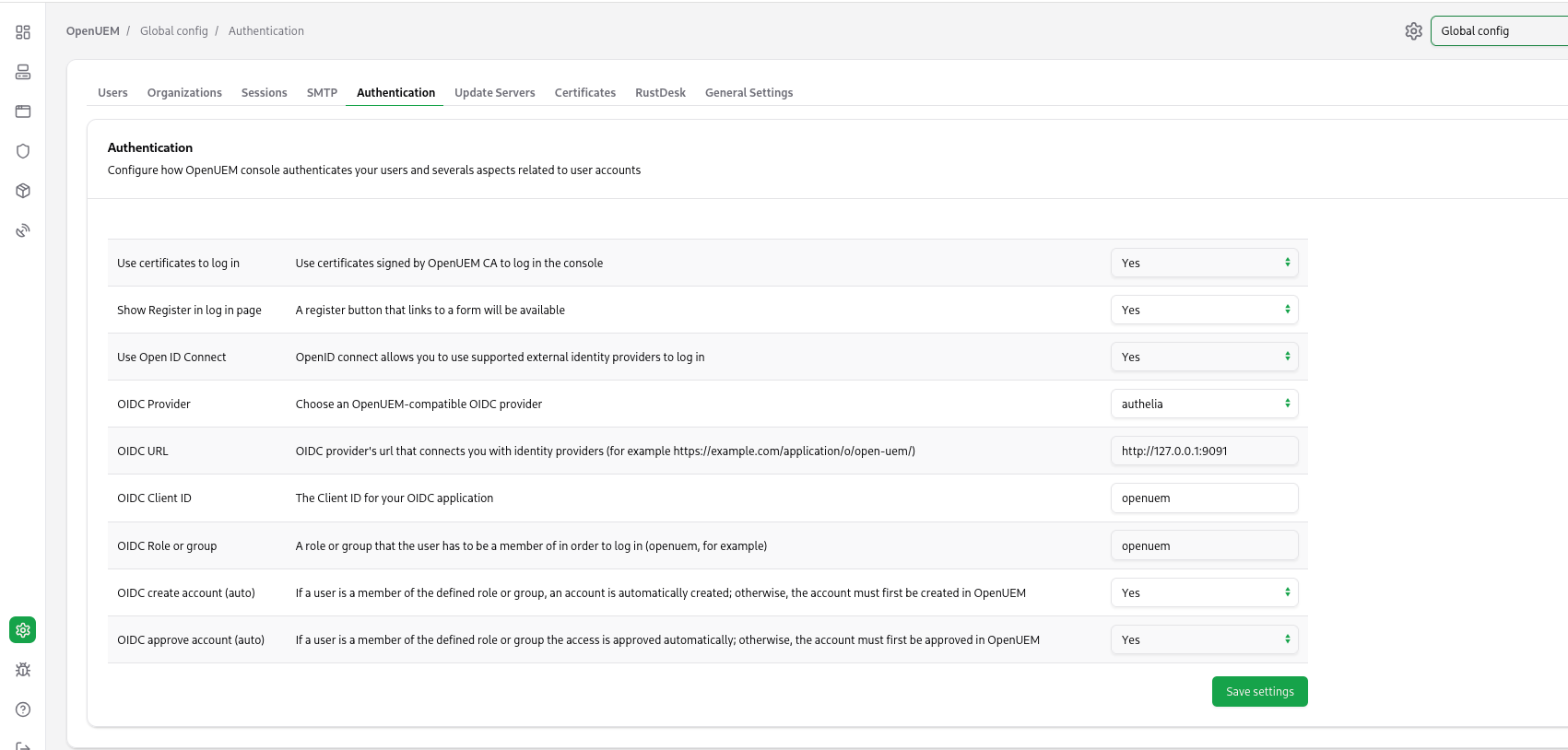
Once you save the required settings for Authelia, when you click the Login with OpenID Connect button, you should be redirected to Authelia's login page.
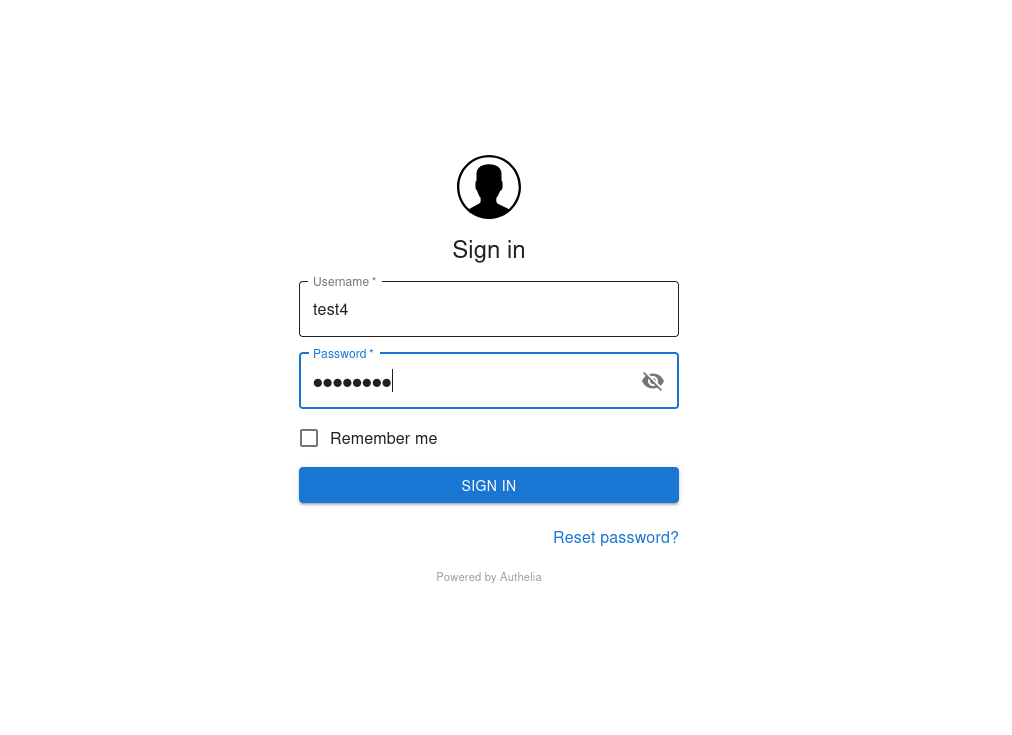
After a successful log in, you should see OpenUEM’s dashboard.
Authentik
This section discusses how you can create an application in Authentik and configure OpenUEM so you can log in to the console using this Identity Provider.
This section assumes that you have a user created in Authentik (for example, test1) that uses a password to log in, and that this user is a member of a group (for example, openuem). This documentation doesn’t explain how you can create users or groups, use passkeys, external authentication, 2FA..., please refer to Authentik’s documentation to learn more about those topics or ask for help in OpenUEM Discord channel.
Let’s see how we create the OpenUEM application in Authentik.
We start with the wizard to create a new application. We can give the app the name OpenUEM and go to the next step.
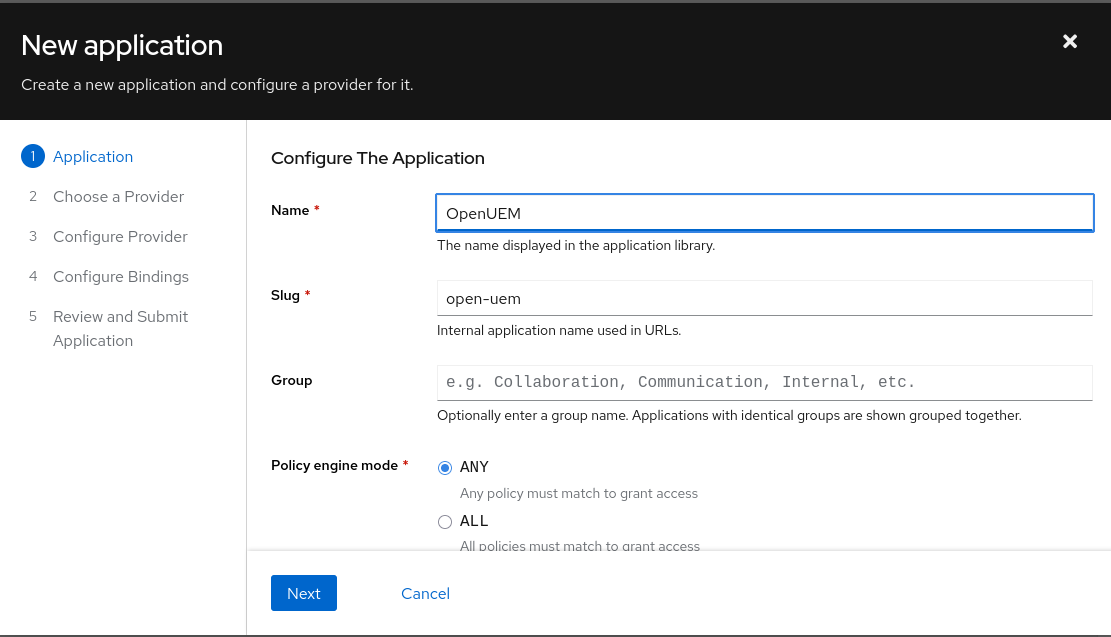
The OpenUEM application uses the OpenID Connect provider type.
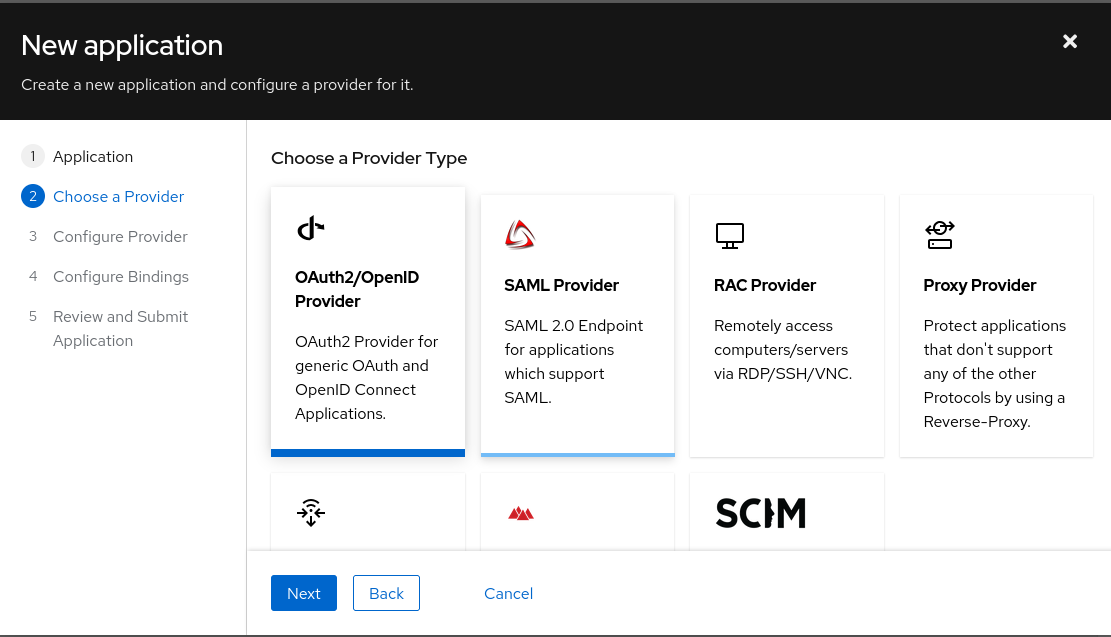
The OAuth2/OpenID Connect provider is configured using the implicit consent (automatically proceeds to OpenUEM console after the user logs in to authentik, with no extra approval step) and the Client type is Public.

We bind the application to an existing group (for example, openuem).
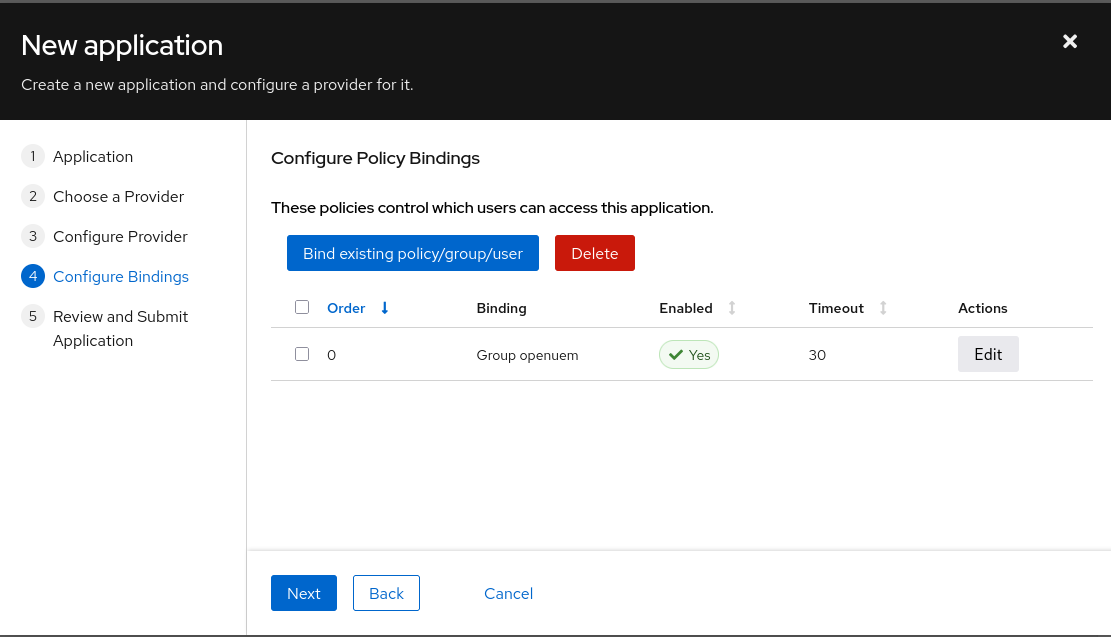
The final step allows you to review the configuration and create the application.
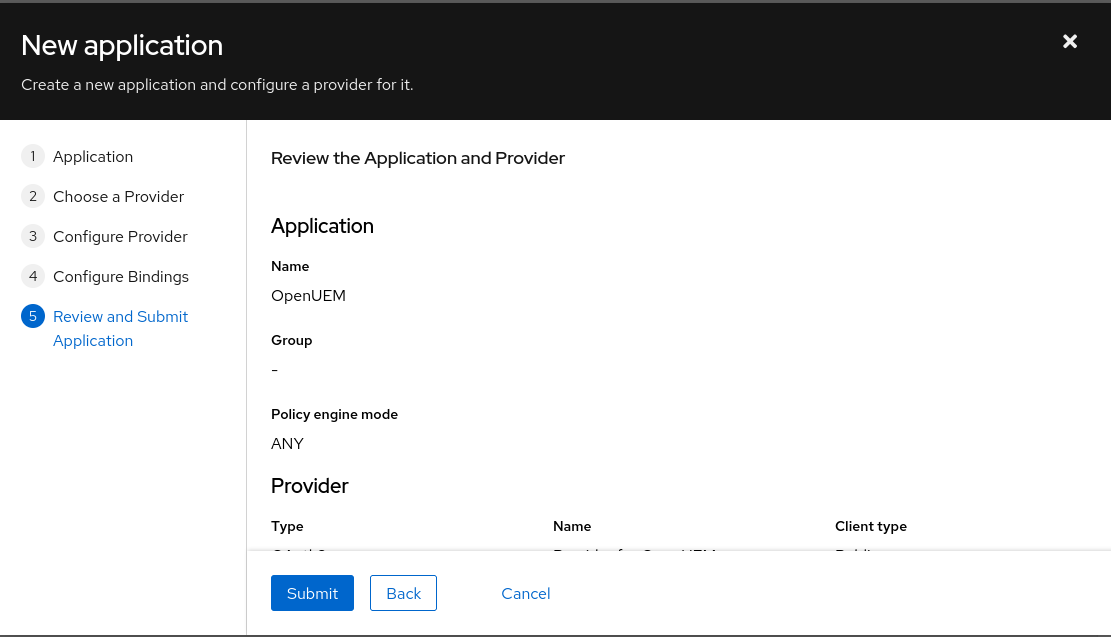
Once the application is created, we can inspect its configuration.
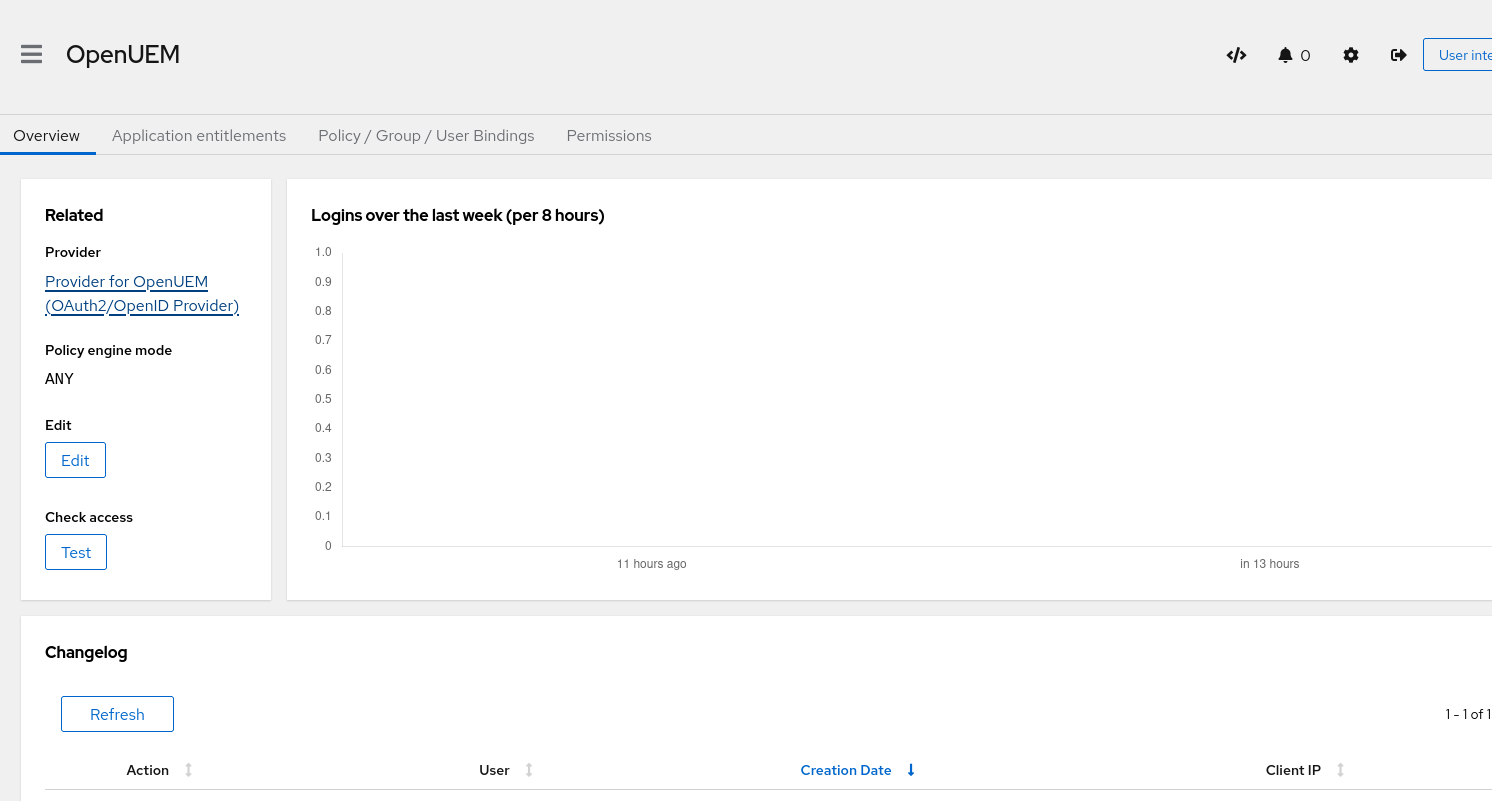
If we click on the Provider for OpenUEM link, a new window will show with some information that we’d need to let OpenUEM know how the OpenID Connect authentication must be performed. We’ll need the Client ID and the OpenID Configuration Issuer url (the slash at the end must be copied to; Authentik’s URLs always end with a slash).
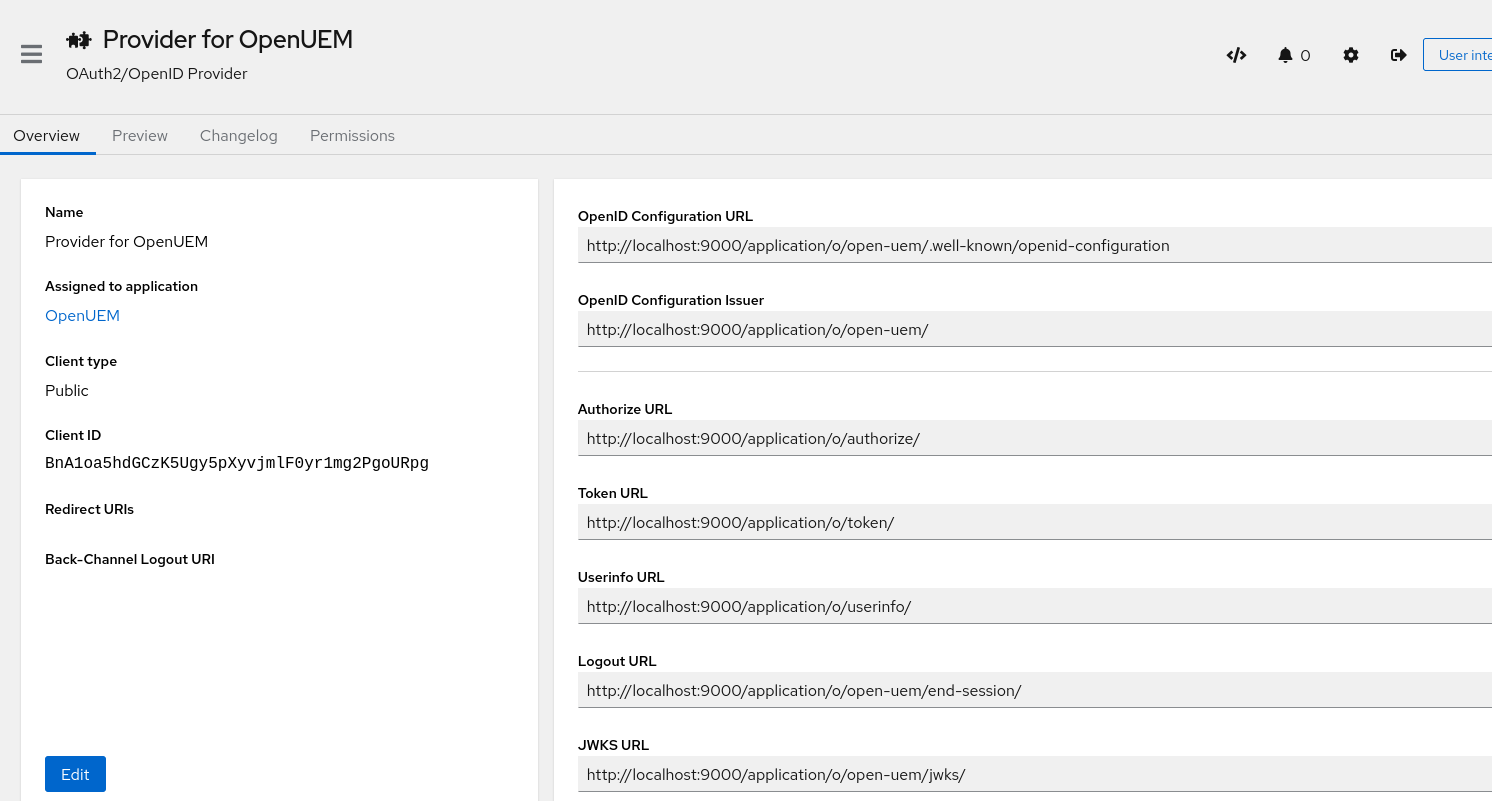
It’s time to go to OpenUEM and configure the Authentik provider. Let’s visit the Global configuration and click the Authentication tab. Here we can manage how OpenUEM authenticates users. You must add the Client ID, the URL that OpenUEM will be used to communicate with Authentik and the name of the group that the user must be a member of.

Once you save the required settings for Authentik, when you click the Login with OpenID Connect button, you should be redirected to Authentik’s login page.
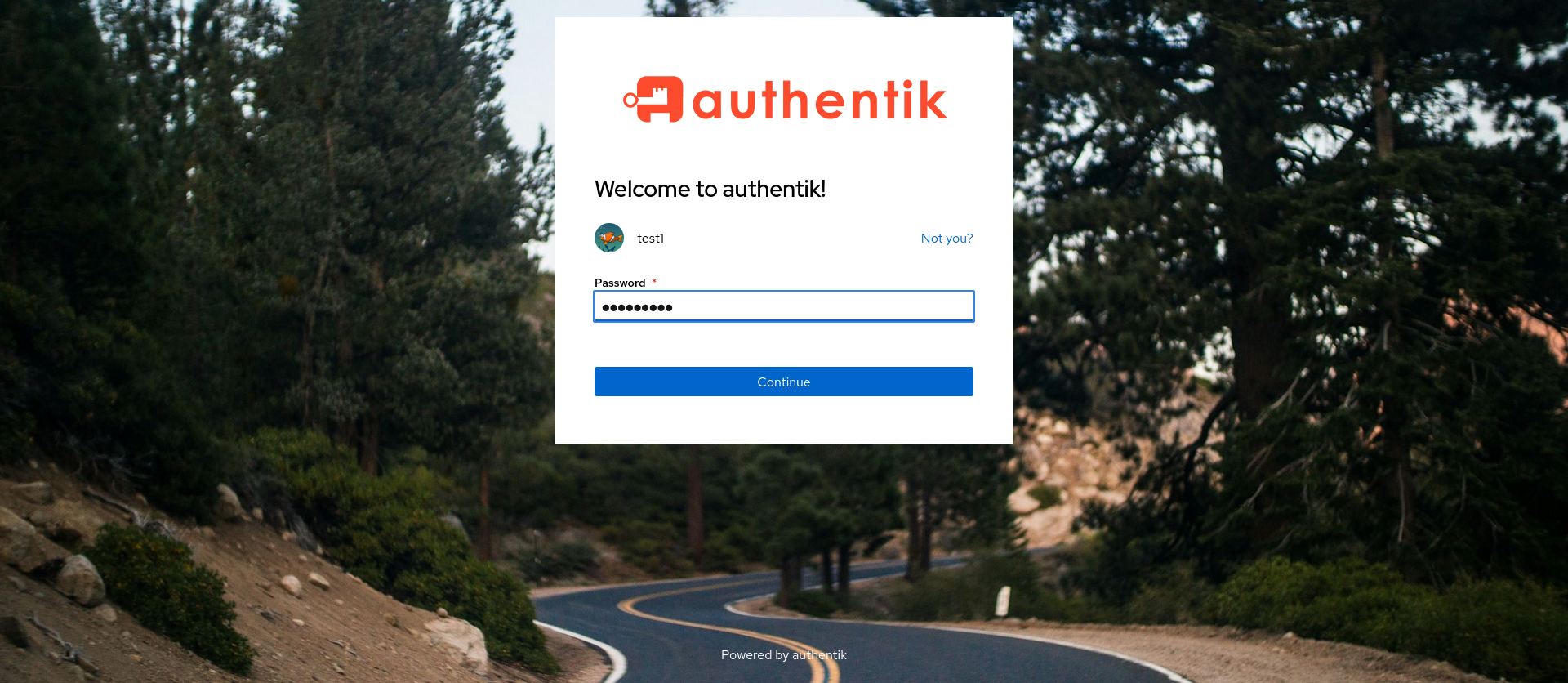
After a successful log in, you should see OpenUEM’s dashboard.
Keycloak
This section discusses how you can create an application in Keycloak and configure OpenUEM so you can log in to the console using this Identity Provider.
This section assumes that you have a user created in Keycloak (for example, test2) that uses a password to log in, and that this user is a member of a group (for example, openuem). This documentation doesn’t explain how you can create users or groups, use passkeys, external authentication, 2FA..., please refer to Keycloak’s documentation to learn more about those topics or ask for help in OpenUEM Discord channel.
Let’s see how we create the OpenUEM application in Keycloak.
In this scenario, I work with a Keycloak realm called OpenUEM.
We start with the wizard to create a new client. We select an OpenID Connect client and give it an id (for example: openuem) and a name (for example: openuem) and go to the next step.

In the capability config, we must use the Standard flow and use S256 as the PKCE method.
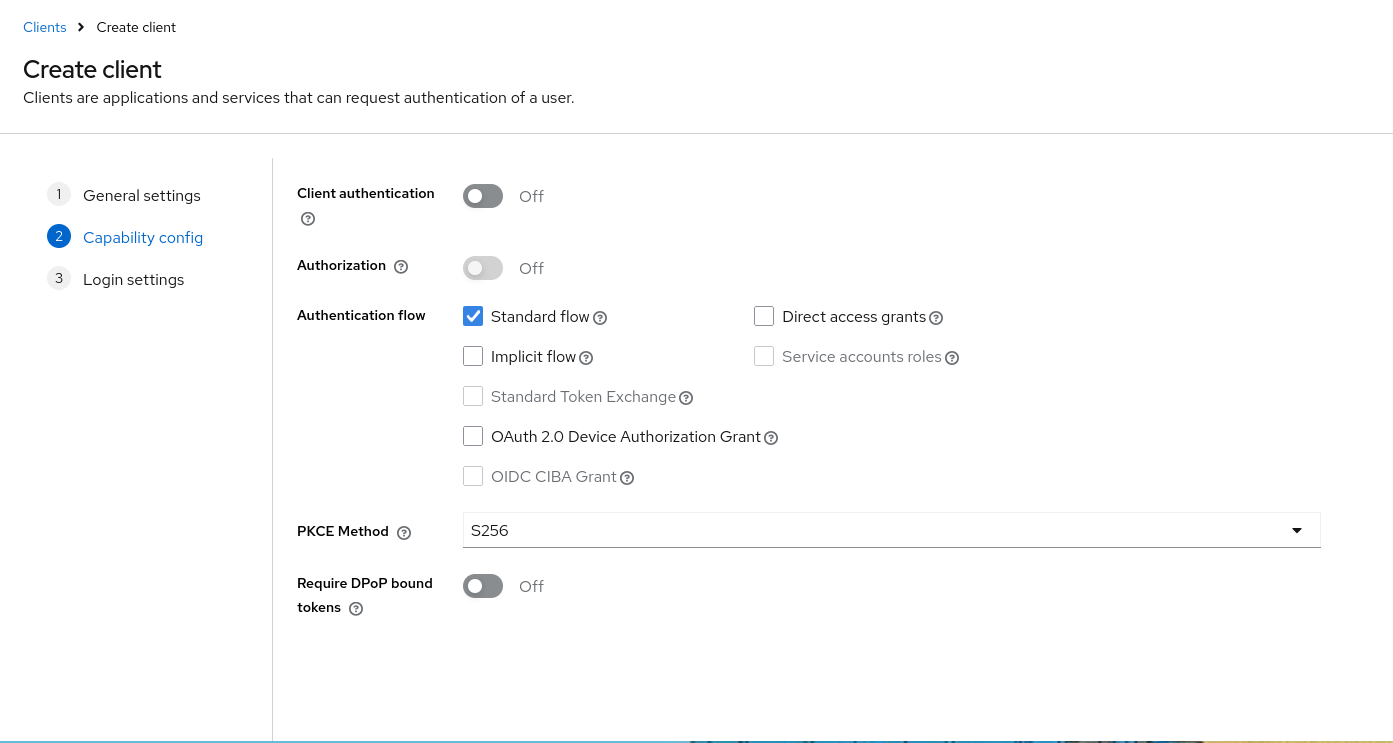
In the login settings config, we must add the redirect URI, which should be the URL that you use to log into the console followed by /oidc/callback, and the post logout URI which should be the URL to log into the console.
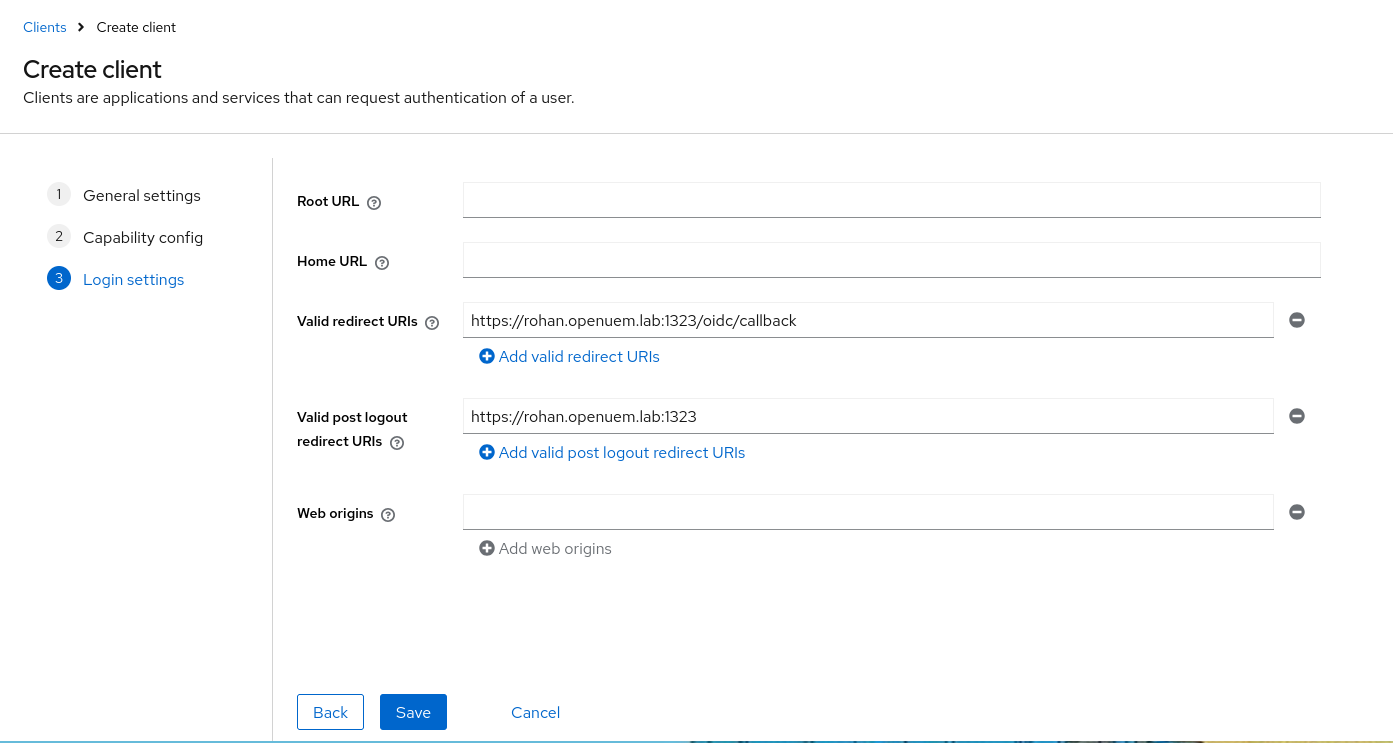
Once the client is created, click on the Client Scopes button. We’re going to create a scope that will allow us to get the group that our user is a member of, in response to our attempt to log into the console.
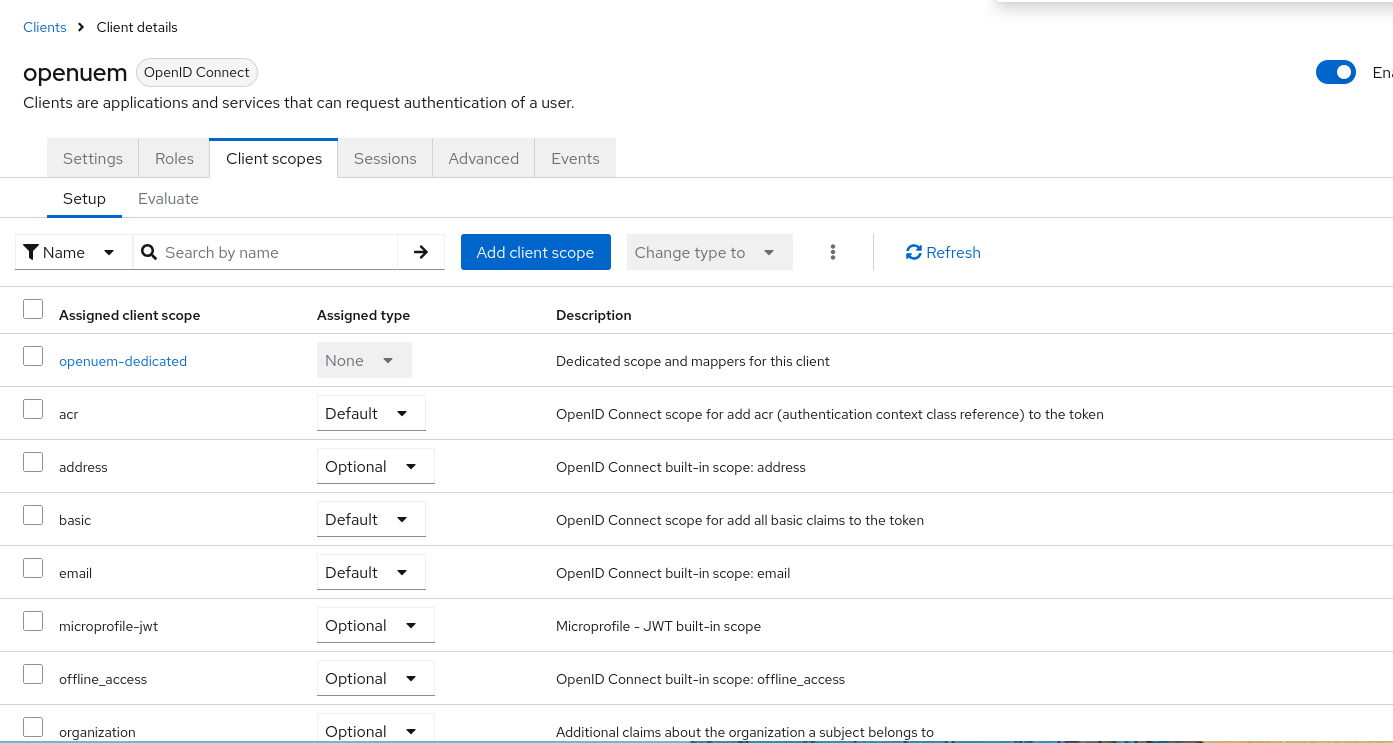
Click on the openuem-dedicated (or the one that has the suffix –dedicated) and then click on Create a new mapper for this scope.
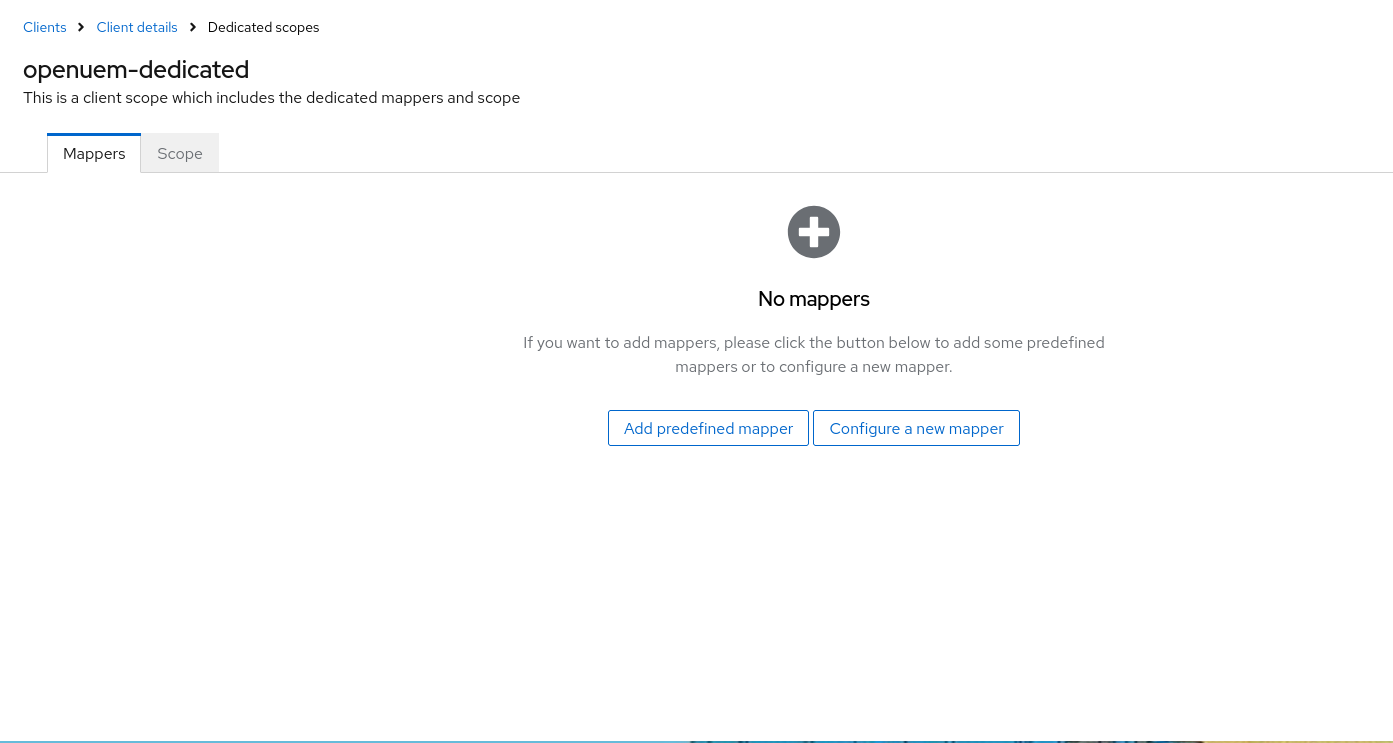
In the new window click on Group Membership
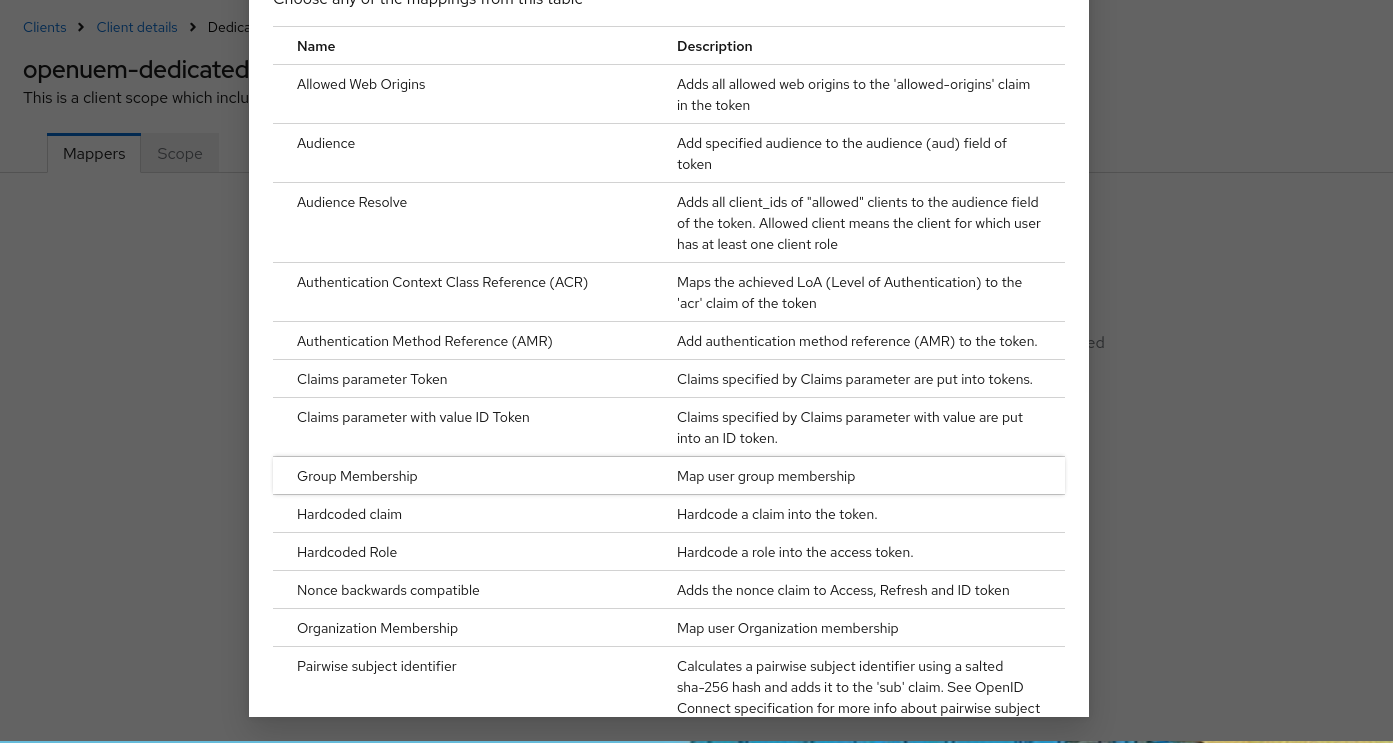
In the mapper definition, we give it a name like Group Membership and use groups as the Token Claim Name. We only must enable the Add to user info and Add to token introspection and leave the rest options as disabled. Click the Save button to finish our mapper definition.
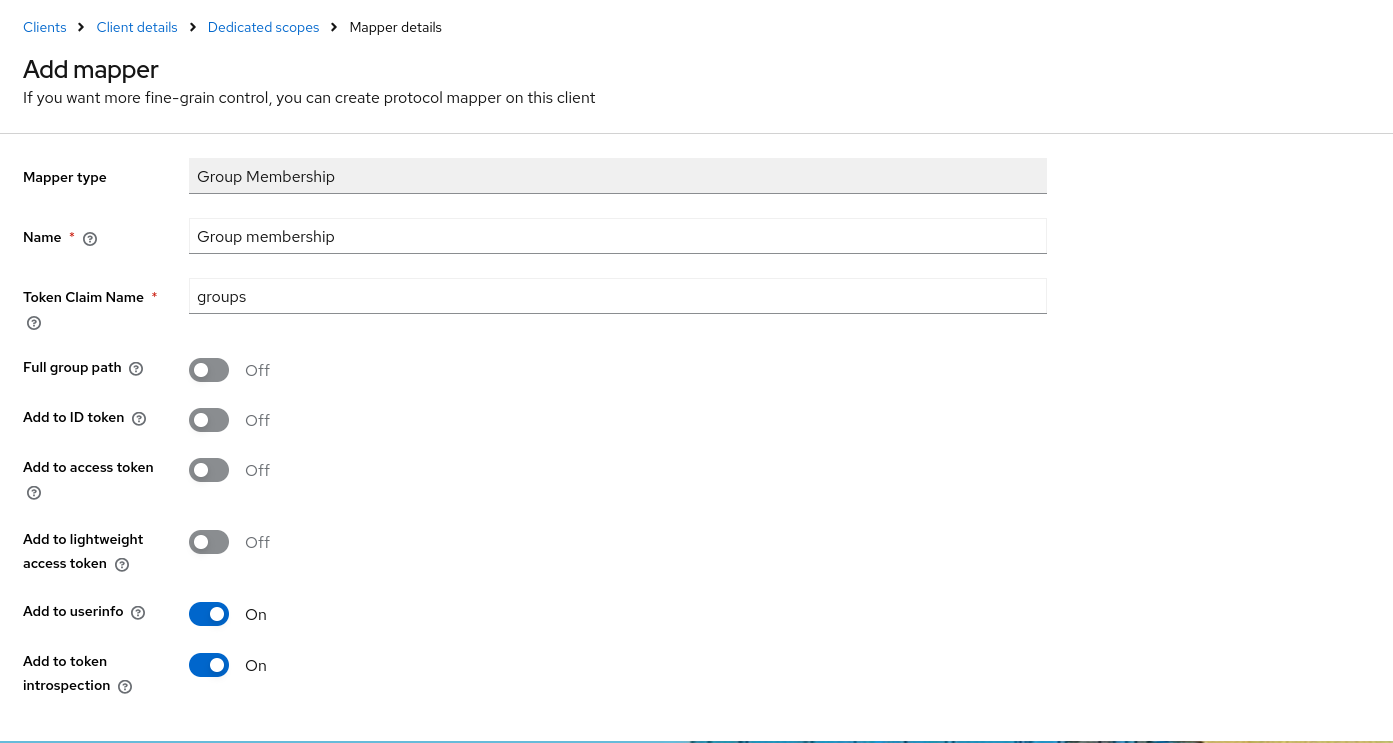
It’s time to go to OpenUEM and configure the Keycloak provider. Let’s visit the Global configuration and click the Authentication tab. Here we can manage how OpenUEM authenticates users. You must add the Client ID (openuem in my example), the URL that OpenUEM will be used to communicate with Keycloak (which is the URL for your Keycloak server followed by /realms/ and the name of your realm, in my example http://localhost:8080/realms/OpenUEM) and the name of the group that the user must be a member of (in my case openuem).
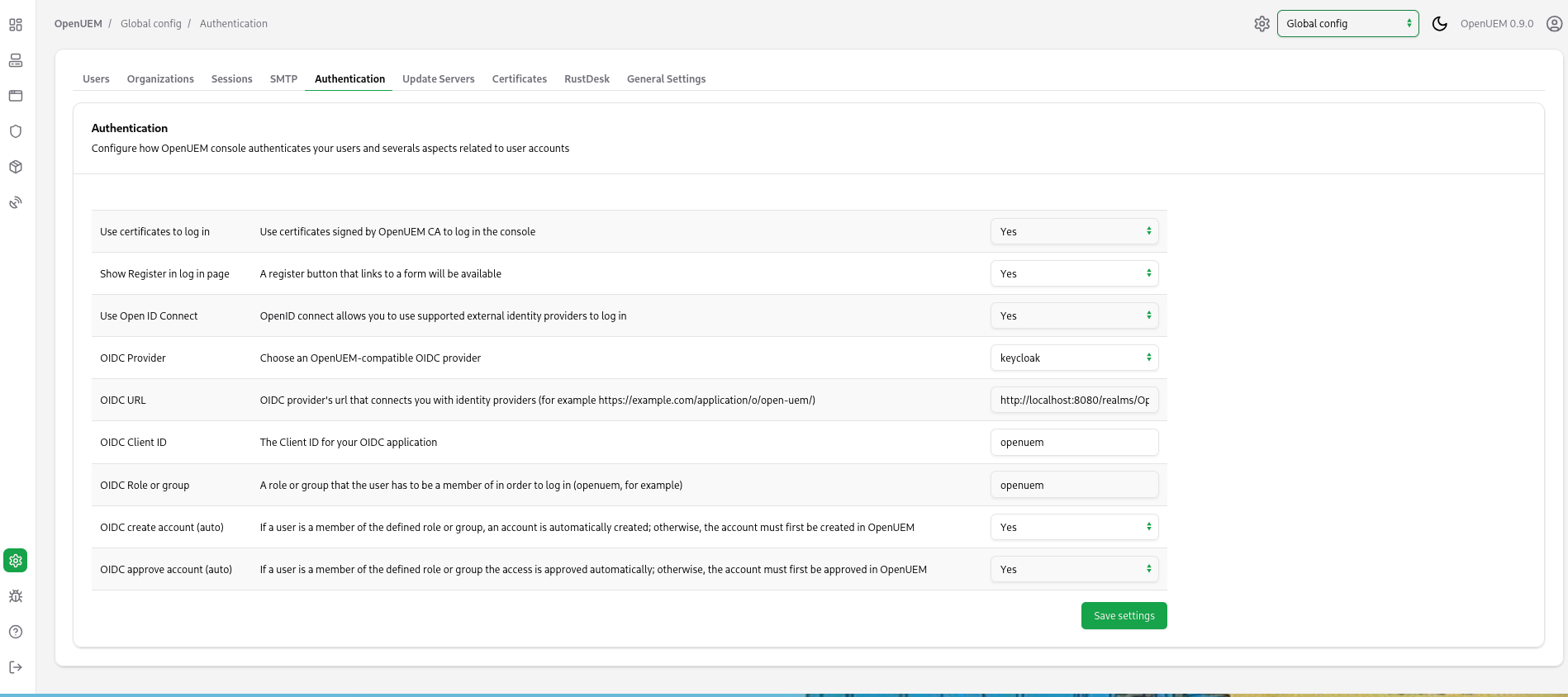
Once you save the required settings for Keycloak, when you click the Login with OpenID Connect button, you should be redirected to Keycloak’s login page.
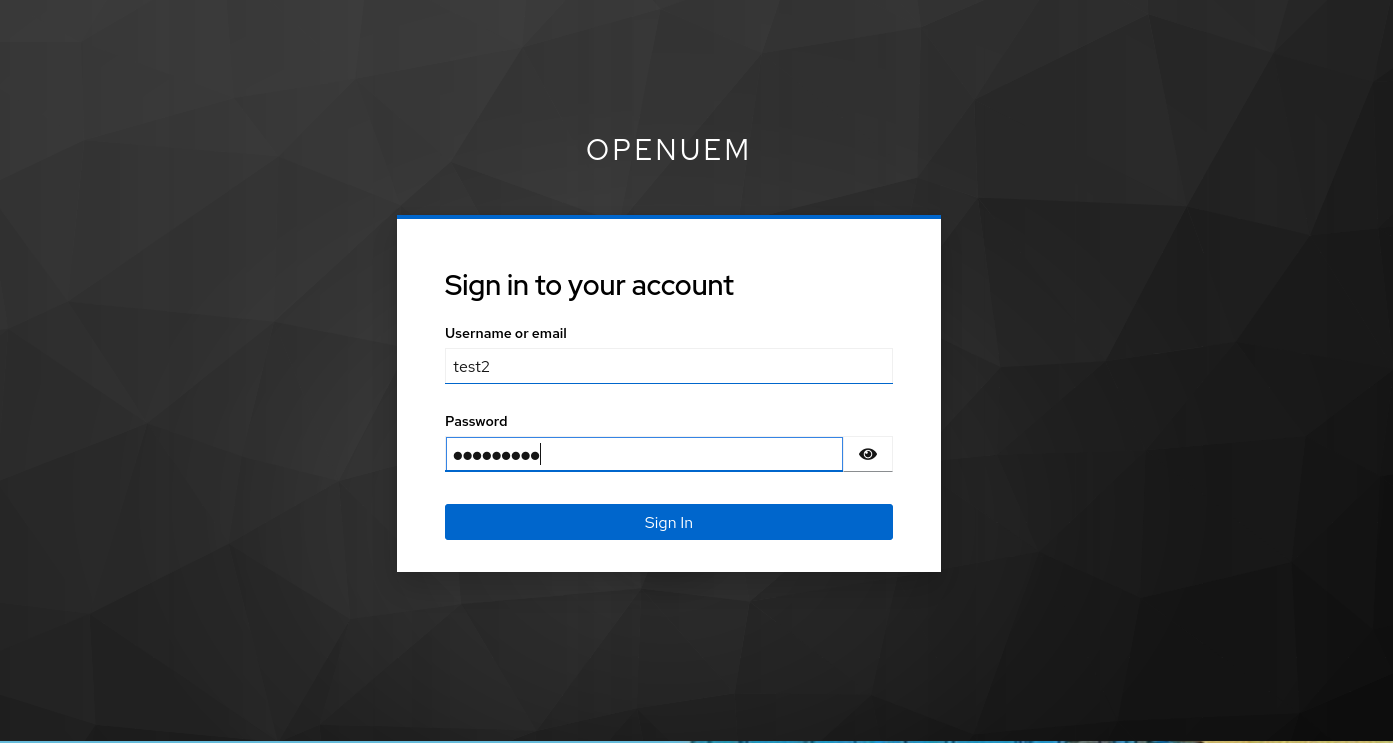
After a successful log in, you should see OpenUEM’s dashboard.
Zitadel
This section discusses how you can create an application in Zitadel and configure OpenUEM so you can log in to the console using this Identity Provider.
This section assumes that you have a user created in Zitadel (for example, test3) that uses a password to log in, and that this user is a member of a group (for example, openuem). This documentation doesn’t explain how you can create users in Zitadel, use passkeys, external authentication, 2FA..., please refer to Zitadel’s documentation to learn more about those topics or ask for help in OpenUEM Discord channel.
Let’s see how we create the OpenUEM application in Zitadel.
We start with the wizard to create a new project. We give the project a name, for example OpenUEM.

In our new project, we use the button to create a new application. In the first step to create the application, we give it a name (for example, OpenUEM) and chose the Web type.
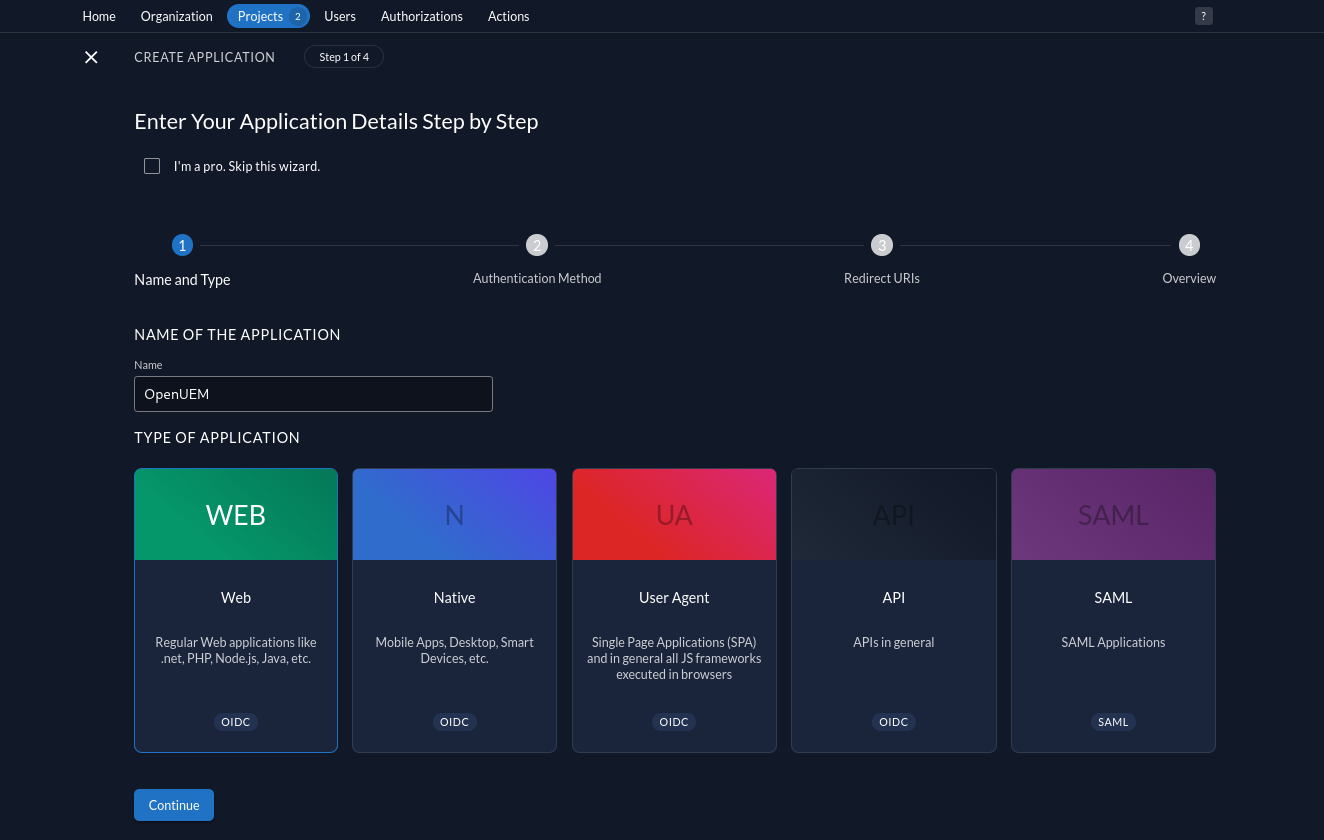
We select PKCE as the authentication type.
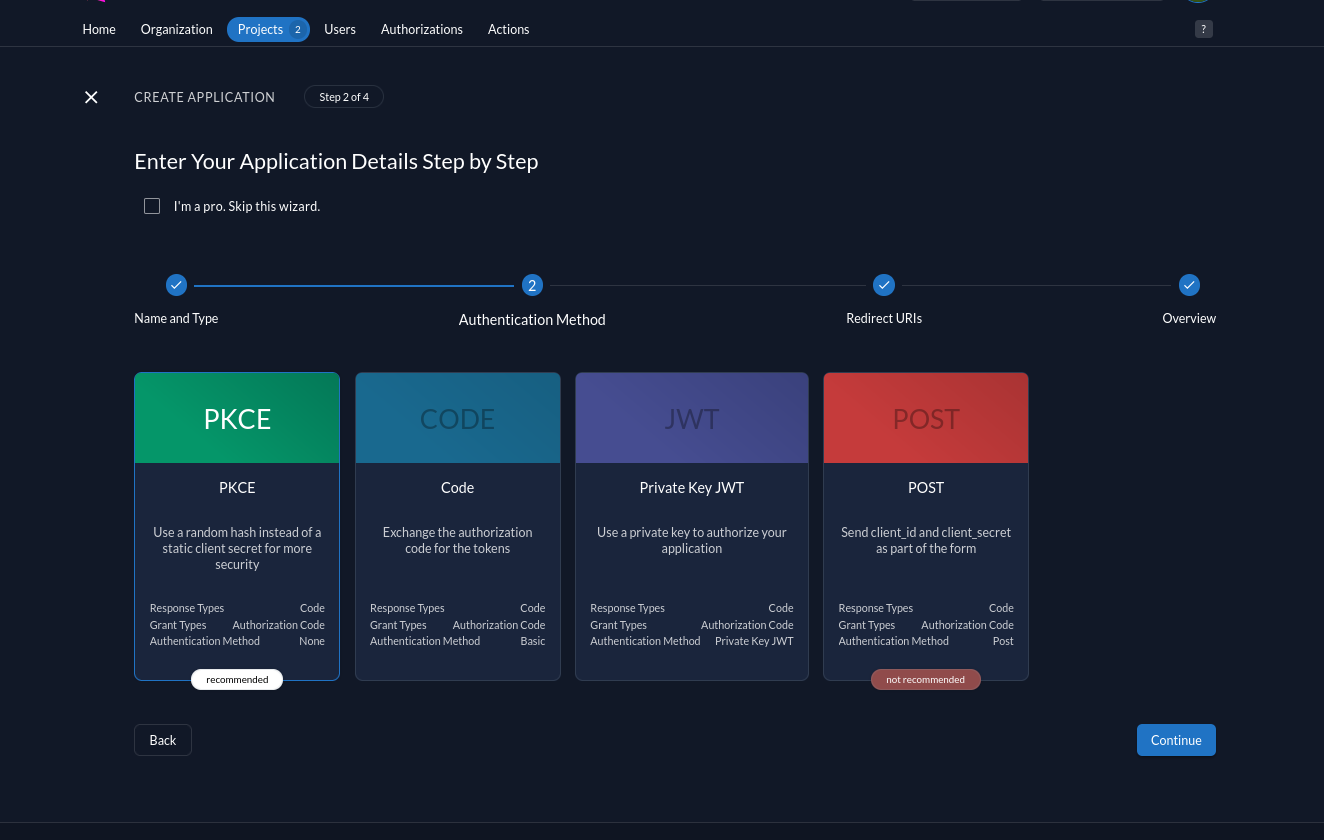
In the login settings config, we must add the redirect URI, which should be the URL that you use to log into the console followed by /oidc/callback, and the post logout URI which should be the URL to log into the console.
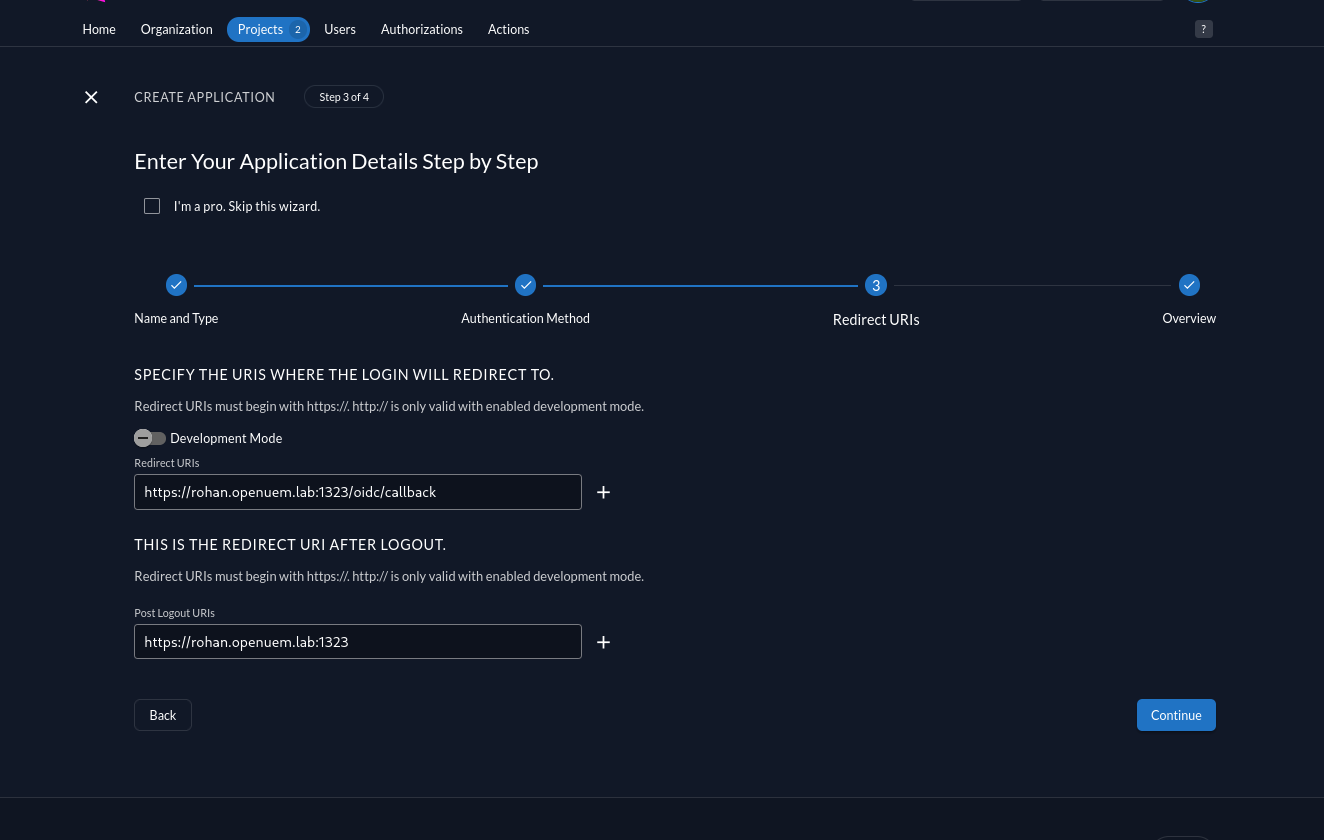
Finally, we review the new app and create it.
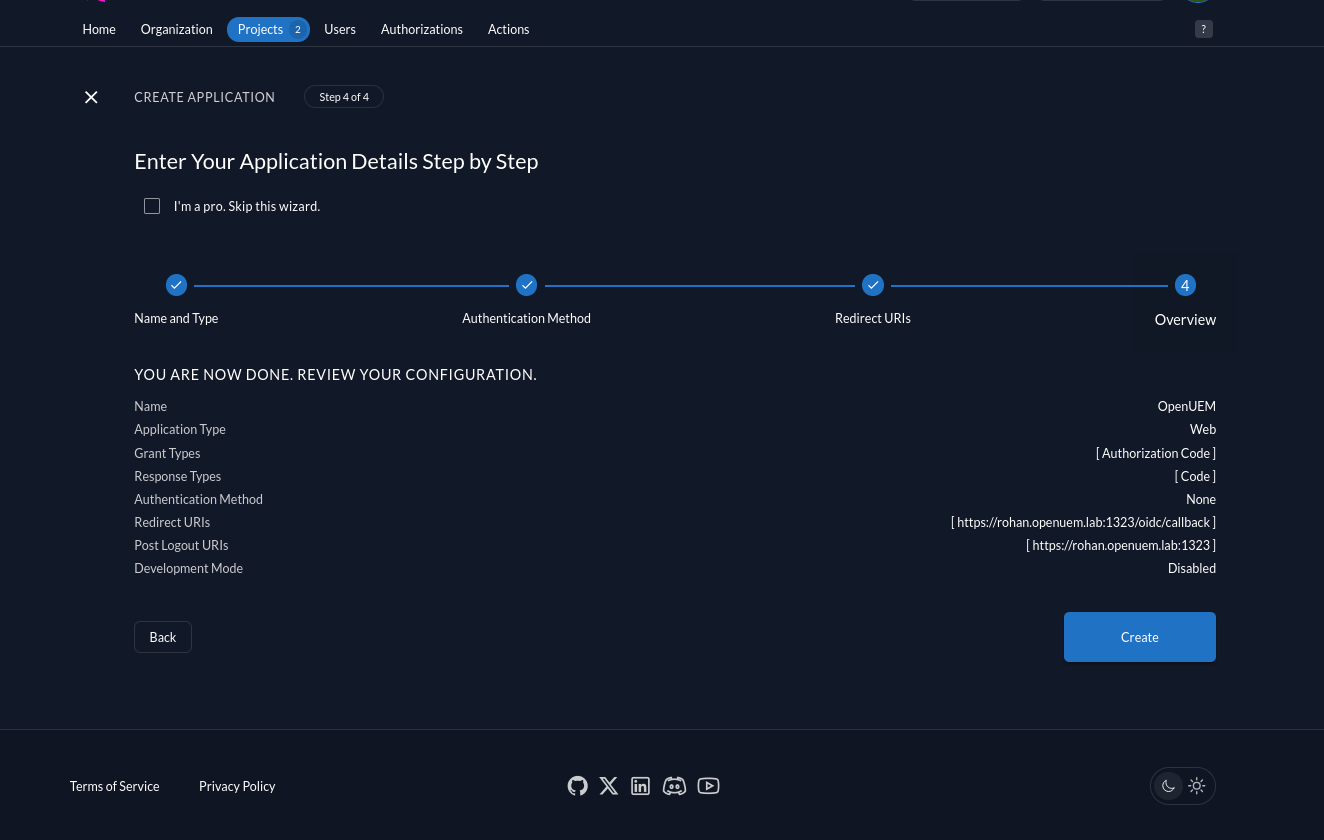
Once we create the application, the Client ID will be shown, we’ve to copy it and store it in a safe place as we’ll use it later when we configure OpenUEM.
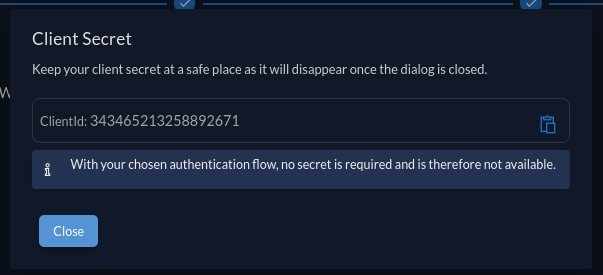
Now, we must go to our OpenUEM project to create a role (for example, openuem) that we’ll use to allow access to users that have this role.
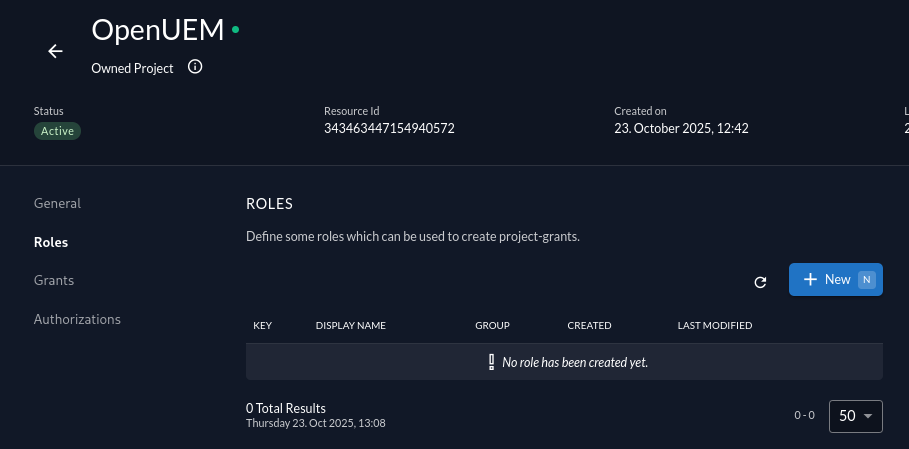
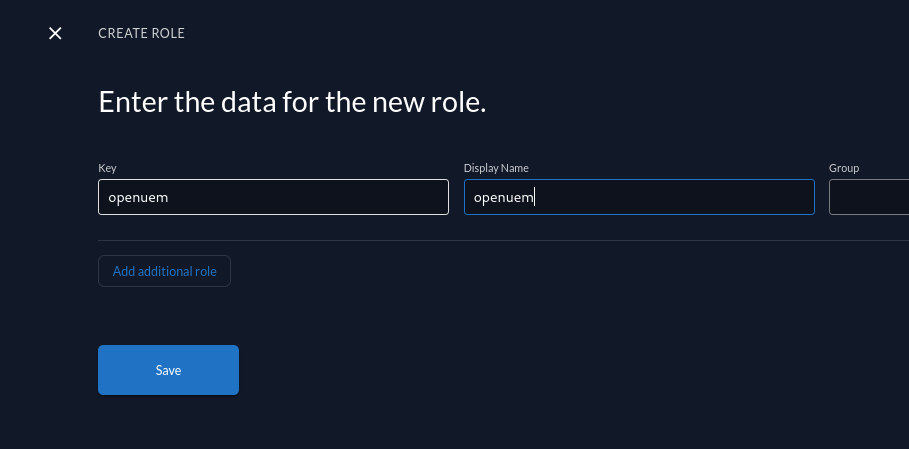
It’s time to assign the role openuem to one of my users creating a new Authorization.
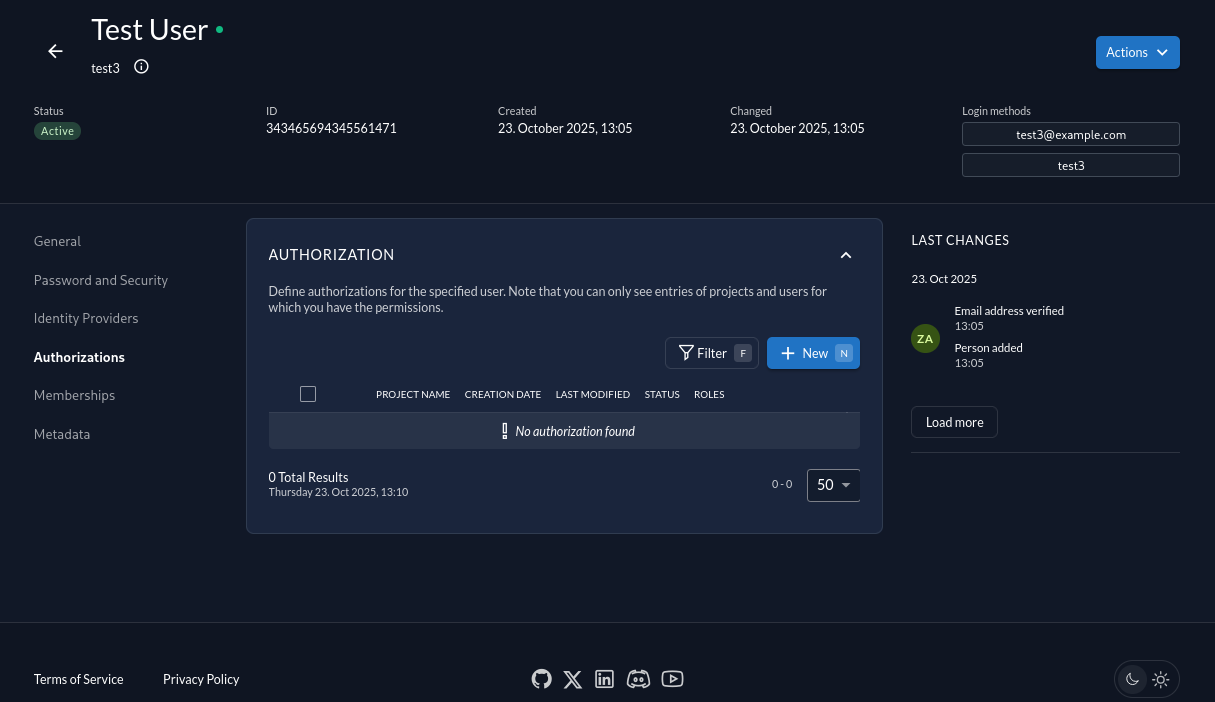
We create an authorization for our project and for the role that we’ve just created.
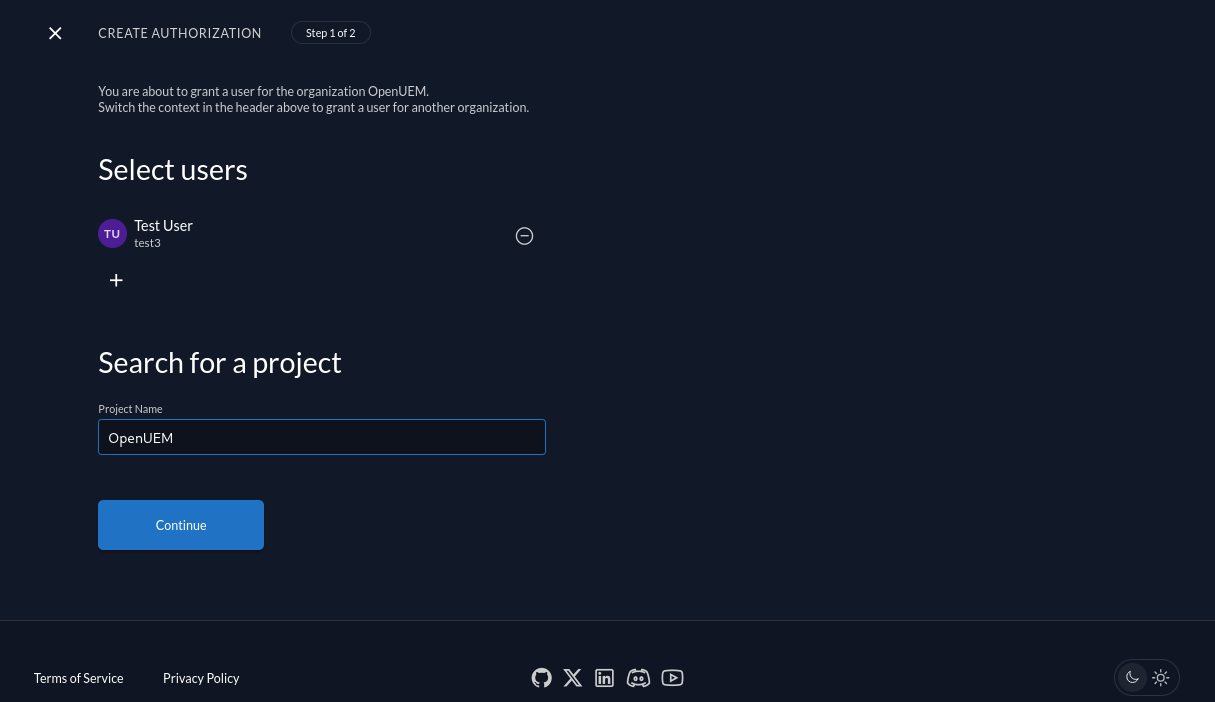
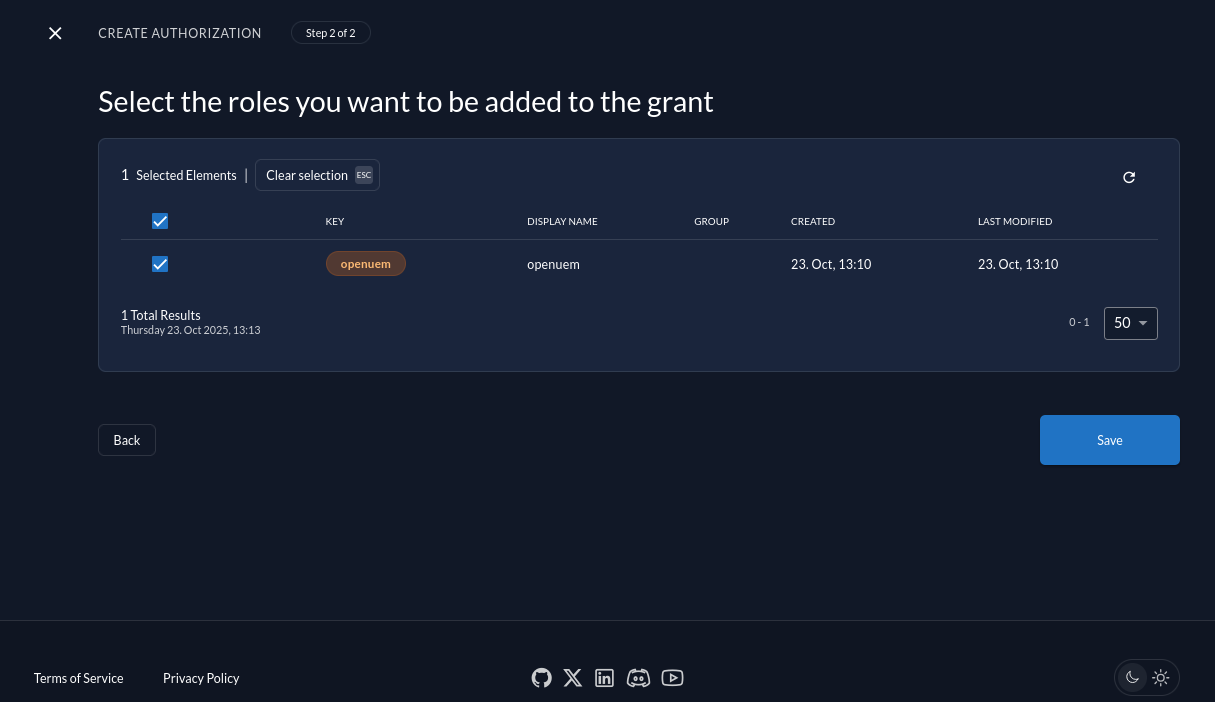
It’s time to go to OpenUEM and configure the Zitadel provider. Let’s visit the Global configuration and click the Authentication tab. Here we can manage how OpenUEM authenticates users. You must add the Client ID (that we copied earlier), the URL that OpenUEM will be used to communicate with Zitadel (which is the URL for our instance) and the name of the role that the user must be a member of (in my case openuem).
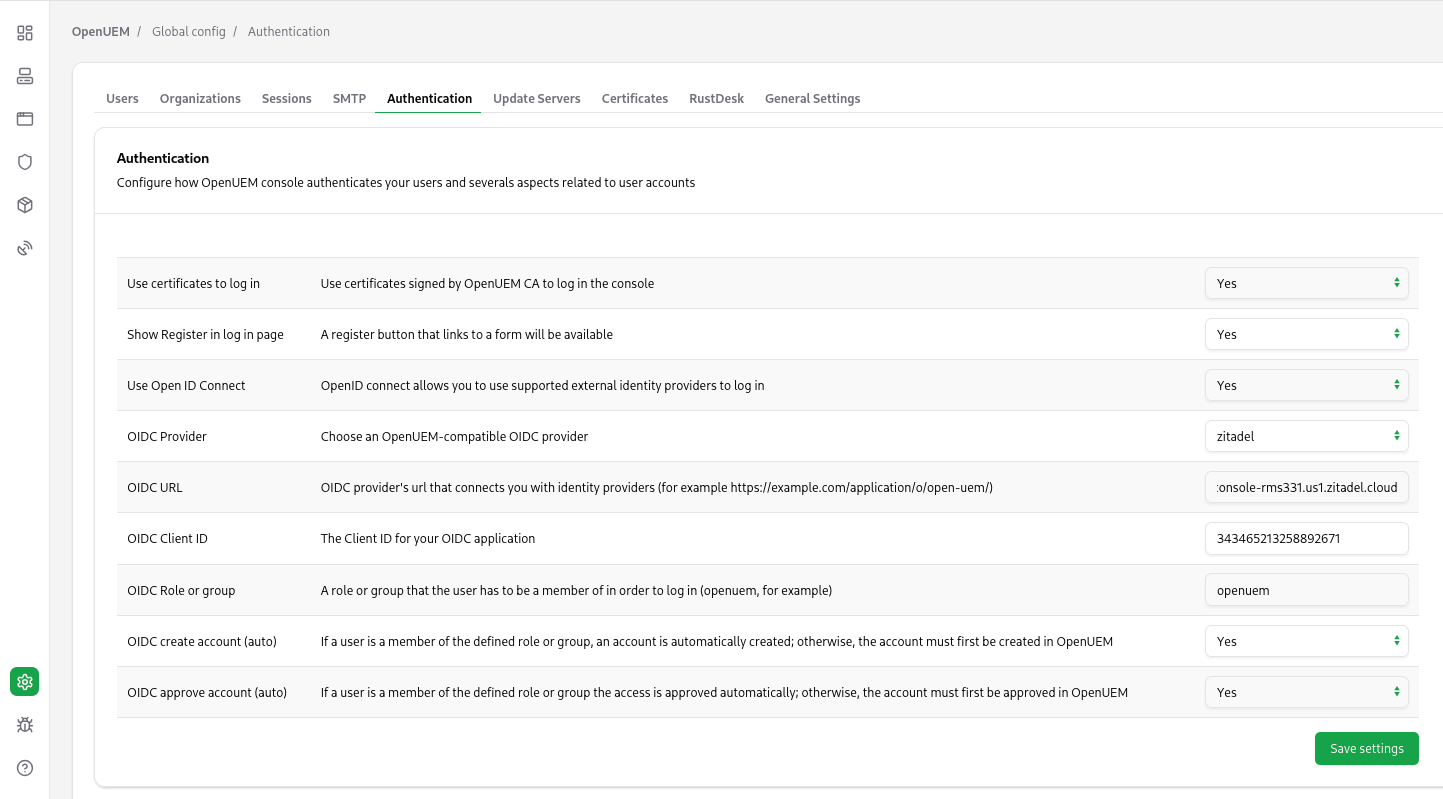
Once you save the required settings for Zitadel, when you click the Login with OpenID Connect button, you should be redirected to Zitadel's login page.
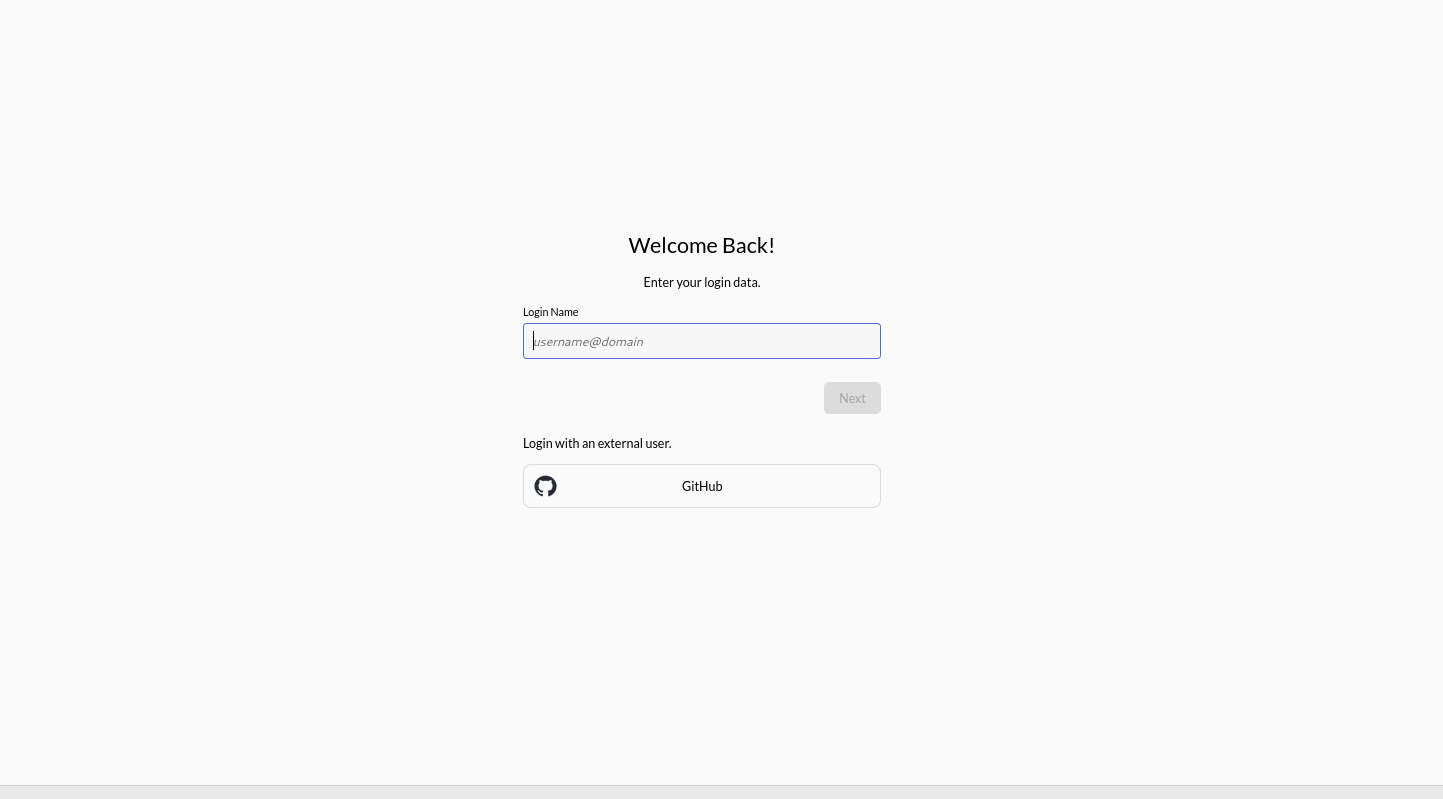
After a successful log in, you should see OpenUEM’s dashboard.
Sessions
OpenUEM has sessions that last 24 hours by default, after that time you'll have to log in again.
You can set a different session lifetime visiting Admin -> General Settings
Log Out
When you want to log out, you can use the icon in the sidebar...
or you can click on your profile to show the log out